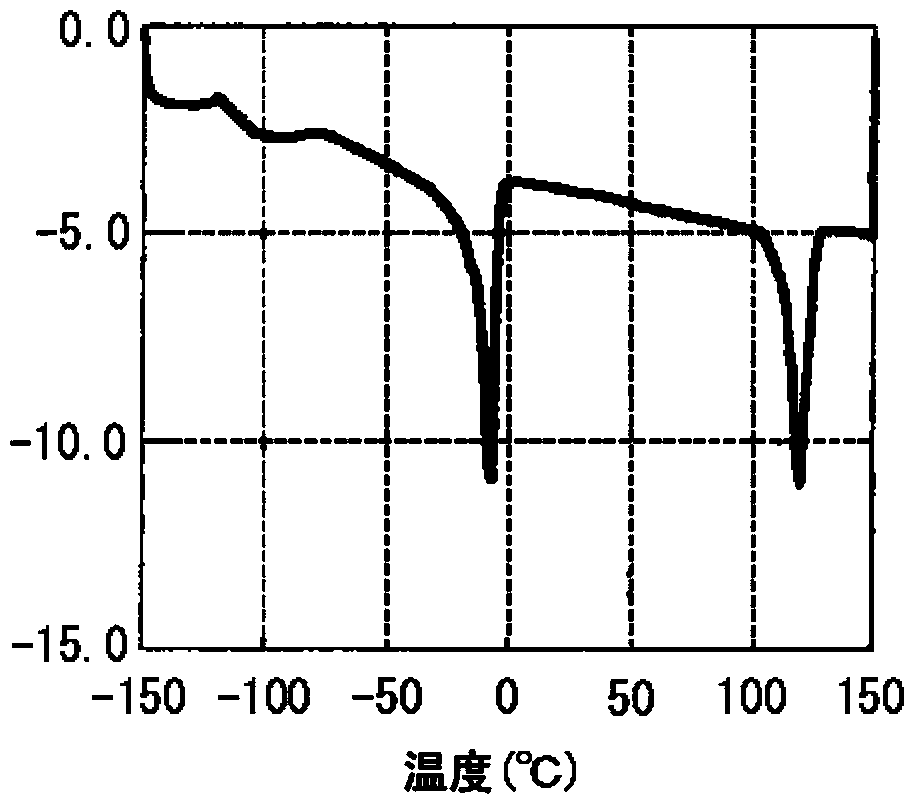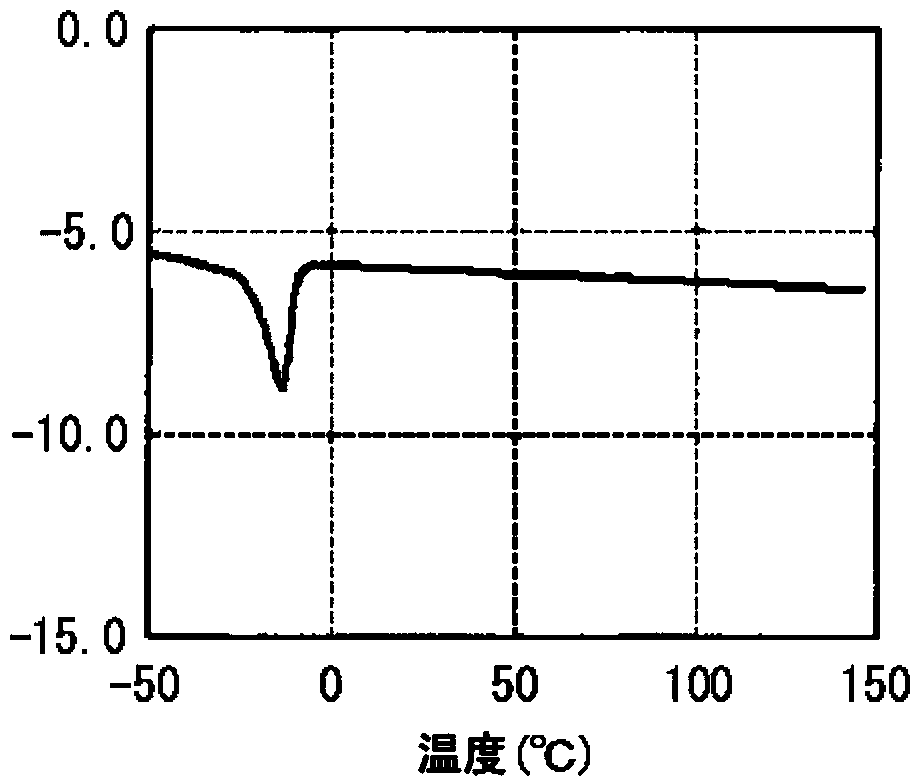Copolymer, rubber composition, rubber composition for tire side use, crosslinked rubber composition, and tire
A technology of rubber composition and copolymer, applied in special tires, tire parts, transportation and packaging, etc., can solve the problems of low crack growth resistance and poor compatibility of conjugated dienes, and achieve crack growth resistance. excellent effect
- Summary
- Abstract
- Description
- Claims
- Application Information
AI Technical Summary
Problems solved by technology
Method used
Image
Examples
example
[0118] by [A] + Examples of represented cations include carbonium cations, oxonium cations, ammonium cations, phosphonium cations, cycloheptatrienyl cations, and transition metal-containing ferrocenium cations. Examples of the carbenium cation include trisubstituted carbenium cations such as triphenylcarbenium cation and tri(substituted phenyl)carbenium cation. Specific examples of tri(substituted phenyl)carbenium cations include tris(tolyl)carbenium cations. Examples of ammonium cations: trialkylammonium cations such as trimethylammonium cations, triethylammonium cations, tripropylammonium cations and tributylammonium cations; N,N-dialkylanilinium cations such as N,N- Dimethylanilinium cations, N,N-diethylanilinium cations, and N,N-2,4,6-pentamethylanilinium cations; and dialkylammonium cations such as diisopropylammonium cations and bicyclic Hexylammonium cation. Examples of the phosphonium cation include triarylphosphonium cations such as triphenylphosphonium cation, tri...
Embodiment 1
[0265] 160 mL of toluene solution was added to a fully dried 400 mL pressure-resistant glass reactor, and then ethylene was introduced into it at 0.8 MPa. Meanwhile, in a glove box under a nitrogen atmosphere, 28.5 μmol of bis(2-phenylindenyl)gadolinium bis(dimethylsilylamide)[(2-PhC 9 h 6 ) 2 GdN(SiHMe 2 ) 2 ], 34.2 μmol dimethylanilinium tetrakis (pentafluorophenyl) borate [Me 2 NHPhB(C 6 f 5 ) 4 ] and 1.43 mmol of diisobutylaluminum hydride were dissolved in 8 mL of toluene, thereby obtaining a catalyst solution. Then, the catalyst solution was taken out from the glove box, and 28.2 μmol of the catalyst solution in terms of gadolinium was added to the monomer solution, which was then subjected to polymerization at room temperature for 5 minutes. Thereafter, while the introduction pressure of ethylene was decreased at a rate of 0.2 MPa / min, 100 mL of a toluene solution containing 15.23 g (0.28 mol) of 1,3-butadiene was added, and polymerization was performed for anot...
Embodiment 2
[0267] 700 mL of a toluene solution containing 28.0 g (0.52 mol) of 1,3-butadiene was added to a sufficiently dried 2 L stainless steel container, and then ethylene was introduced thereinto at 0.8 MPa. Meanwhile, in a glove box under a nitrogen atmosphere, 400.0 μmol of dimethylaluminum (μ-dimethyl)bis(2-phenylindenyl)neodymium [(2-PhC 9 h 6 ) 2 Nd(μ-Me) 2 Al Me 2 ] and 200.0 μmol triphenylcarbenium tetrakis (pentafluorophenyl) borate [Ph 3 CB(C 6 f 5 ) 4 ], which was dissolved in 80 mL of toluene, thereby obtaining a catalyst solution. Then, the catalyst solution was taken out from the glove box, and 390.0 μmol of the catalyst solution in terms of neodymium was added to the monomer solution, which was then subjected to polymerization at 60° C. for 60 minutes. After the polymerization, 1 mL of an isopropanol solution containing 5% by mass of 2,2′-methylene-bis(4-ethyl-6-tert-butylphenol) (NS-5) was added to terminate the reaction. Then, a large amount of methanol was ...
PUM
| Property | Measurement | Unit |
|---|---|---|
| specific surface area | aaaaa | aaaaa |
| specific surface area | aaaaa | aaaaa |
| glass transition temperature | aaaaa | aaaaa |
Abstract
Description
Claims
Application Information
 Login to View More
Login to View More - R&D
- Intellectual Property
- Life Sciences
- Materials
- Tech Scout
- Unparalleled Data Quality
- Higher Quality Content
- 60% Fewer Hallucinations
Browse by: Latest US Patents, China's latest patents, Technical Efficacy Thesaurus, Application Domain, Technology Topic, Popular Technical Reports.
© 2025 PatSnap. All rights reserved.Legal|Privacy policy|Modern Slavery Act Transparency Statement|Sitemap|About US| Contact US: help@patsnap.com



